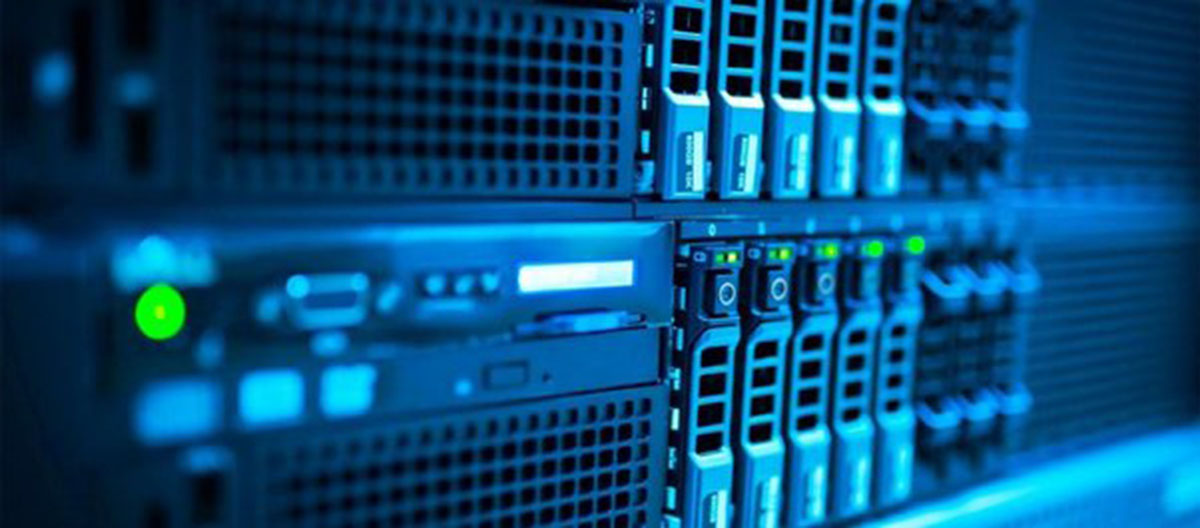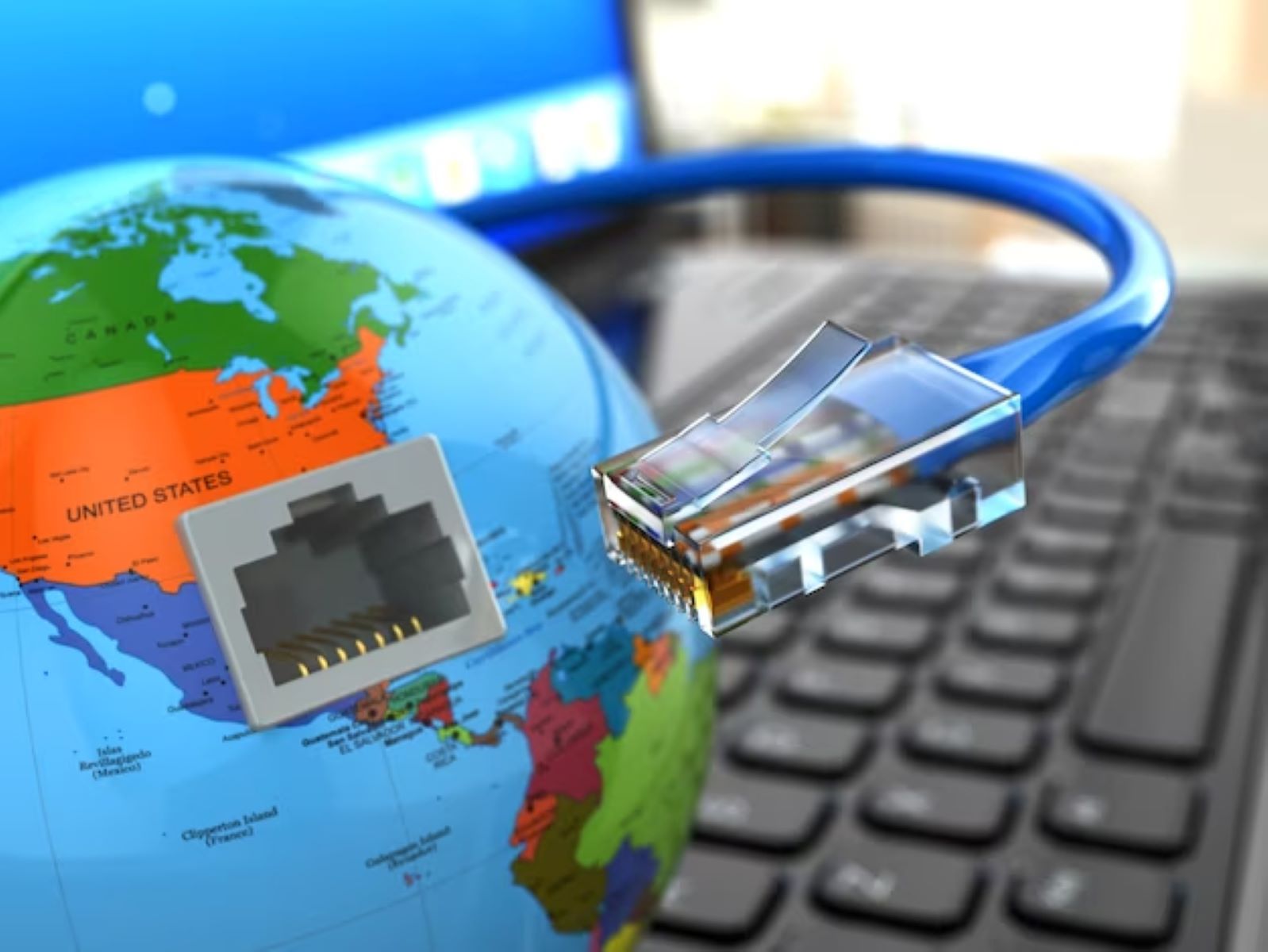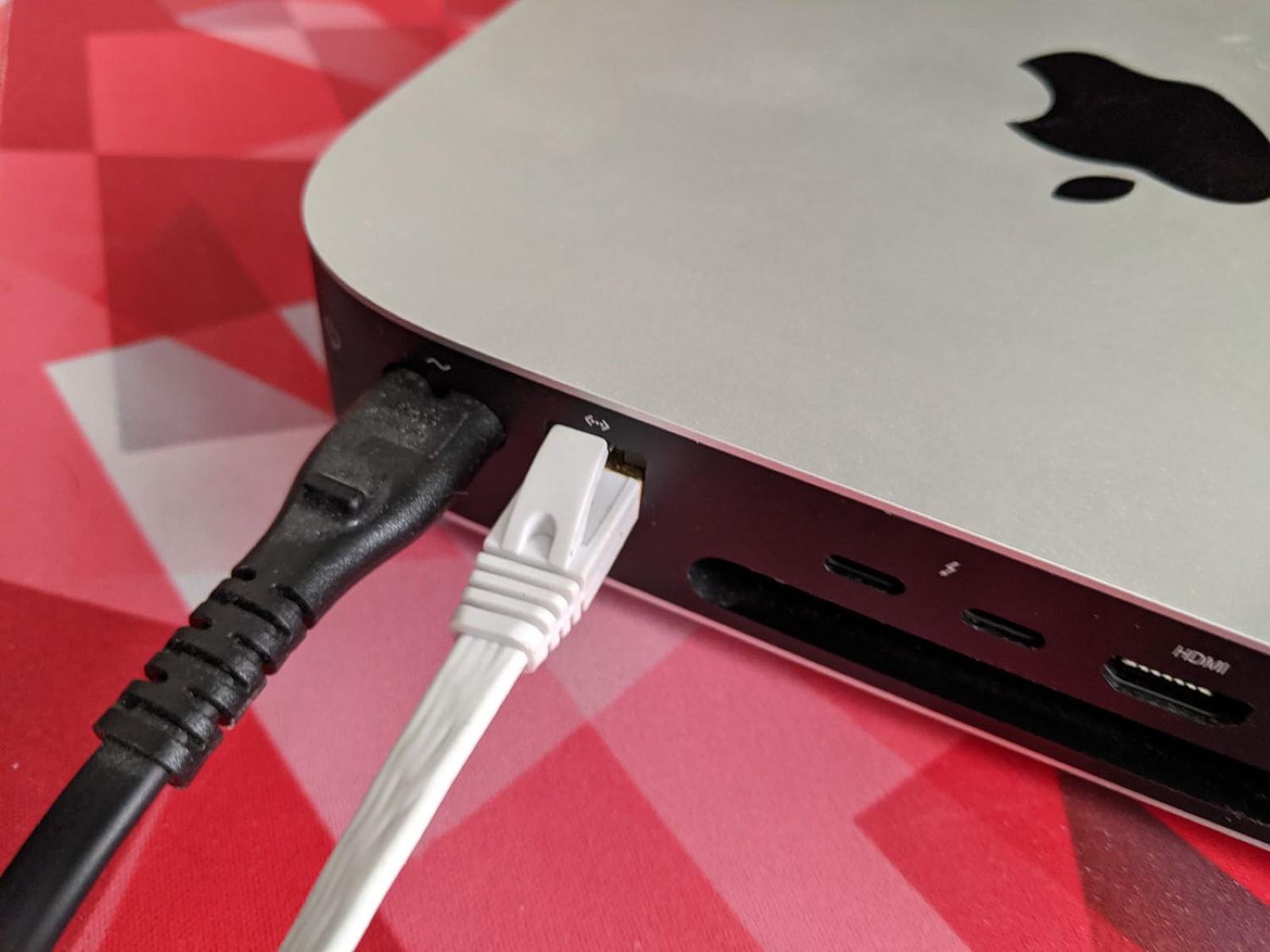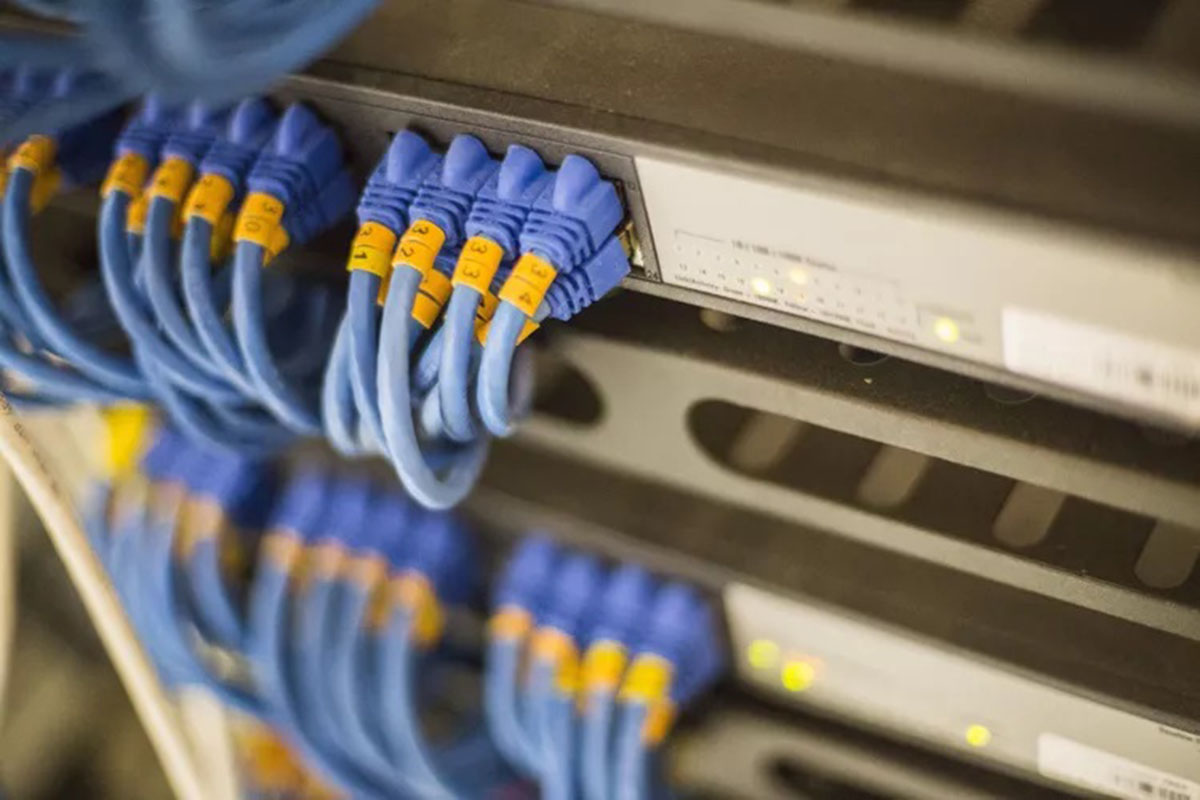Introduction
Imagine a world without IP addresses – an internet without the ability to connect devices, access websites, or communicate with others online. It would be a chaotic and disconnected digital landscape. IP addresses, short for Internet Protocol addresses, play a fundamental role in enabling the functionality and connectivity of the internet. They are the unique numerical identifiers assigned to devices connected to a network, allowing for seamless communication and data transmission.
In today’s digital age, where the internet has become an integral part of our daily lives, understanding why we need IP addresses is crucial. Whether it’s browsing websites, streaming videos, sending emails, or connecting smart devices, IP addresses make all of it possible.
But what exactly is an IP address, and how does it work? How does it facilitate communication between devices? What is its purpose beyond simply identifying devices on a network? In this article, we will explore the significance of IP addresses and shed light on their essential role in ensuring a functional and interconnected internet.
What is an IP address?
An IP address is a unique numerical label assigned to every device connected to a computer network. It acts as an identifier that allows devices to communicate and exchange data over the internet. Think of it as a virtual address that helps route information between different devices.
IP addresses come in two versions: IPv4 (Internet Protocol version 4) and IPv6 (Internet Protocol version 6). IPv4 uses a 32-bit address format, represented by four sets of numbers separated by periods, such as 192.168.0.1. This version can support around 4.3 billion different addresses, which may seem like a large number, but with the increasing number of devices connected to the internet, IPv4 addresses are becoming scarce. To address this issue, IPv6 was introduced with a 128-bit format, consisting of eight sets of numbers separated by colons, such as 2001:0db8:85a3:0000:0000:8a2e:0370:7334. IPv6 has the capacity to support an enormous number of unique addresses, ensuring that the growth of the internet and the proliferation of devices can be sustained.
IP addresses are hierarchical and can be divided into two parts: the network portion and the host portion. The network portion identifies the network that the device is connected to, while the host portion identifies the specific device within that network. This structure allows for efficient routing of data packets across networks.
It’s important to note that IP addresses can be assigned dynamically or statically. Dynamic IP addresses are automatically assigned by a DHCP (Dynamic Host Configuration Protocol) server and change periodically. On the other hand, static IP addresses are manually assigned to devices and remain unchanged unless modified by the network administrator.
In summary, an IP address is a unique identifier that distinguishes devices on a network. It enables the exchange of information, allowing us to access websites, send emails, connect devices, and effortlessly communicate over the internet.
How do IP addresses work?
Understanding how IP addresses work is essential to grasp their role in enabling communication and data transmission over the internet. When a device is connected to a network, it is assigned an IP address, which serves as its unique identifier.
When a user requests data from a specific website or sends information to another device, the data is divided into small chunks called data packets. Each data packet carries the sender’s IP address, the recipient’s IP address, and the actual data being transmitted.
Once the data packets are created, they are sent from the sender’s device to the nearest router within the network. Routers are devices that analyze the IP address on each packet to determine the most efficient path for forwarding it to the intended recipient. This process is known as routing.
As the data packets are routed through different routers, each router uses the destination IP address to determine the next hop on the network to reach the recipient’s device. This continues until the data packets reach their destination.
At the recipient’s device, the IP addresses on the incoming data packets are used to identify and reassemble the original message. The data is then processed and made available to the user, whether it’s displaying a website, downloading a file, or any other network activity.
It’s worth noting that IP addresses are not fixed to a physical location or device. They can be reassigned dynamically, meaning that each time a device connects to a network, it can be assigned a different IP address. This dynamic assignment helps conserve IP address resources and ensures efficient utilization of available addresses.
In summary, IP addresses work by assigning a unique identifier to each device connected to a network. They enable the routing of data packets through routers to the intended recipient, facilitating communication and data transmission over the internet.
The purpose of IP addresses
IP addresses serve a vital purpose in the functioning of the internet. They fulfill several key roles that are crucial for seamless communication, data transmission, and network management.
One of the primary purposes of IP addresses is to facilitate communication between devices. By assigning a unique IP address to each device, it becomes possible for devices to send and receive data across networks. Whether it’s accessing a website, sending an email, or streaming media, IP addresses enable the transfer of information between devices in a reliable and efficient manner.
Another fundamental purpose of IP addresses is to identify devices on a network. Each IP address is unique, acting as a digital fingerprint for the device it is assigned to. This identification allows for precise targeting of data packets, ensuring they reach the intended destination and preventing any unauthorized access or data breaches.
IP addresses also play a crucial role in routing data packets. As data travels across networks, routers use IP addresses to determine the most efficient path for data transmission. This routing process ensures that data packets reach their destination in a timely manner, minimizing latency and optimizing network performance.
Furthermore, IP addresses enable internet-based services and applications to function effectively. Services such as web hosting, email servers, online gaming, video conferencing, and many other applications rely on IP addresses to establish connections between devices. Without IP addresses, these services would not be able to operate or communicate with users.
In addition to facilitating communication and data transmission, IP addresses are also essential for securing the internet. Network administrators can monitor and track devices by their IP addresses, enabling them to detect and prevent unauthorized access, monitor network activity, and ensure the overall security of the network.
In summary, the purpose of IP addresses is to facilitate communication between devices, identify devices on a network, route data packets efficiently, enable internet-based services and applications, and enhance network security. Without IP addresses, the functionality and connectivity of the internet would be severely hindered.
Facilitating communication between devices
One of the primary purposes of IP addresses is to facilitate seamless communication between devices connected to a network. IP addresses serve as the digital coordinates that enable devices to transmit and receive data over the internet.
When you type a website address into your browser or send an email, the data is divided into small packets and tagged with the IP address of the sender and the recipient. With this information, the packets can flow across the network, hopping from one router to another until they reach their destination.
IP addresses play a crucial role in establishing connections and ensuring that the right data reaches the intended recipient. They act like virtual phone numbers, allowing devices to initiate communication and receive responses.
Whether it’s a video call, instant messaging, or file sharing, IP addresses are essential for enabling real-time communication between devices. They provide each device with a unique identity, allowing them to establish direct connections and exchange information.
In addition to facilitating direct communication, IP addresses also enable device-to-server communication. When you access a website, for example, your device uses the website’s IP address to request data from the server hosting the site. The server then responds by sending the requested data packets to the IP address of your device.
Furthermore, IP addresses facilitate peer-to-peer communication, allowing devices to connect and share data directly with each other. This is particularly useful for applications such as file sharing or online gaming, where users can interact and exchange data without relying on a central server.
Without IP addresses, communication between devices would be impossible. It is the IP address that enables devices to find each other, establish connections, and exchange data over the internet.
In summary, IP addresses play a vital role in facilitating communication between devices on a network. By assigning a unique identifier to each device, IP addresses enable direct communication, device-to-server communication, and peer-to-peer communication, ensuring the seamless transfer of data over the internet.
Identifying devices on a network
One of the fundamental purposes of IP addresses is to identify devices on a network. Every device connected to a network is assigned a unique IP address, allowing for easy identification and differentiation of devices.
IP addresses act as digital labels that provide a unique identity to each device on the network. This identification enables efficient communication and data transmission, ensuring that data packets are routed correctly and reach their intended destinations.
When a device connects to a network, it is assigned an IP address, either dynamically or statically. This IP address serves as a digital fingerprint that distinguishes the device from others on the same network.
Each IP address is made up of two parts: the network portion and the host portion. The network portion represents the network that the device is connected to, while the host portion identifies the specific device within that network.
For example, in an IP address like 192.168.0.1, “192.168.0” represents the network portion, and “1” represents the host portion. This structure allows for efficient routing of data packets within a network.
With IP addresses, network administrators can easily manage and monitor devices on their networks. They can allocate IP addresses, track devices’ activities, and enforce security measures to protect the network from unauthorized access or potential threats.
Furthermore, IP addresses also allow devices to communicate with each other within a local area network (LAN) or across different networks. Devices can use the IP addresses of other devices to establish connections and exchange data, whether it’s for file sharing, printing documents, or accessing shared resources.
IP addresses also play a crucial role in network diagnostics and troubleshooting. By analyzing the IP addresses assigned to devices, network administrators can identify potential issues, locate network bottlenecks, and resolve connectivity problems more efficiently.
In summary, IP addresses serve as unique identifiers that allow for the easy identification of devices on a network. They make it possible to manage and monitor devices, facilitate communication between them, and enable network diagnostics and troubleshooting.
Routing data packets
Another significant purpose of IP addresses is to facilitate the routing of data packets across networks. When data is transmitted over the internet, it is divided into smaller chunks called data packets. These packets contain both the sender’s and the recipient’s IP addresses, allowing them to be accurately routed through the network.
Routing refers to the process of determining the most efficient path for data packets to travel from the sender to the intended recipient. This path may involve multiple routers, each analyzing the destination IP address of the packet and making decisions on how to forward it.
As data packets travel through the network, each router examines the IP destination address and uses its routing table to determine the next hop or the next router on the path to the recipient’s device. This process continues until the packets reach their destination.
IP addresses play a vital role in this routing process. They allow routers to understand where the data packets need to be sent and how to reach the intended destination. Each router acts as a junction point on the network, making decisions based on the information contained within the packets’ IP headers.
Routing based on IP addresses ensures that data packets are delivered in an efficient and reliable manner. By quickly analyzing IP addresses and making routing decisions, routers help optimize network performance, reduce latency, and ensure that data reaches its destination within the shortest possible time.
Furthermore, IP addresses allow for the implementation of more advanced routing protocols, such as Border Gateway Protocol (BGP), which enables routing between different autonomous systems on the internet. BGP uses IP addresses to exchange routing information and determine the best path for data packets to traverse between networks.
In summary, IP addresses are instrumental in routing data packets across networks. By using IP addresses, routers can determine the most efficient path for data transmission, ensuring that packets reach their intended destinations in a reliable and timely manner.
Enabling internet-based services and applications
IP addresses play a crucial role in enabling the functionality of various internet-based services and applications. From websites and email servers to online gaming and video streaming platforms, IP addresses are essential for establishing connections and facilitating data exchange over the internet.
Web hosting services, for example, rely on IP addresses to associate domain names with specific servers. When a user enters a website URL into their browser, the domain name is translated into an IP address through the Domain Name System (DNS). This IP address is then used to locate and connect to the web server hosting the requested website.
Email servers also utilize IP addresses to route and deliver emails. When an email is sent, the sender’s email server references the recipient’s domain name to obtain the associated IP address. This IP address is crucial for delivering the email to the correct recipient’s email server, ensuring efficient and accurate email communication.
IP addresses are also integral to online gaming and video streaming platforms. For multiplayer online games, IP addresses are used to establish connections between players, allowing them to interact and compete in real-time. Video streaming platforms use IP addresses to deliver content to viewers, ensuring that the video data packets are correctly routed from the streaming server to viewers’ devices.
Furthermore, IP addresses enable various other internet-based services and applications, such as Voice over IP (VoIP) services, virtual private networks (VPNs), and remote access tools. These services rely on IP addresses for initiating and maintaining connections, ensuring secure and efficient communication over the internet.
Without IP addresses, these internet-based services and applications would not be able to function effectively. IP addresses enable the establishment of connections between devices, the routing of data packets, and the delivery of information, ensuring that users can access and utilize these services with ease.
In summary, IP addresses are essential for enabling internet-based services and applications. They allow for the association of domain names with servers, facilitate email communication, establish connections for online gaming and video streaming, and enable a wide range of other internet-based services and applications to operate seamlessly.
Securing the internet
IP addresses also play a crucial role in ensuring the security of the internet. By utilizing IP addresses, network administrators can implement various measures to protect networks, prevent unauthorized access, and mitigate potential security threats.
One of the ways IP addresses contribute to securing the internet is through network monitoring and tracking. Network administrators can monitor and track devices on a network by analyzing their IP addresses. This allows them to detect any suspicious activity, identify potential security breaches, and take appropriate action to mitigate risks.
IP addresses also serve as a vital component in access control and network segmentation. By assigning IP addresses to specific devices or groups of devices, network administrators can control access to the network. Firewalls and other security devices can be configured to allow or deny access based on IP address ranges, helping to protect sensitive data and resources.
IP addresses are also a critical element in implementing security measures such as intrusion detection and prevention systems (IDPS) and antimalware solutions. These security solutions rely on IP addresses to identify and block malicious IP addresses or suspicious network traffic, providing an additional layer of defense against cyber threats.
In addition, IP addresses are used in network address translation (NAT) and network address port translation (NAPT), which help conceal the internal IP addresses of devices from external networks. NAT and NAPT ensure that devices within a private network are not directly accessible from the public internet, adding an extra layer of security against potential attacks.
Furthermore, IP addresses aid in traceback and investigative efforts in the event of cybercrimes or network attacks. By analyzing the IP addresses involved in malicious activities, authorities can trace the origin of the attack and gather valuable information for investigations.
Overall, IP addresses are instrumental in implementing security measures and protecting the integrity, confidentiality, and availability of networks and resources. By leveraging IP addresses, network administrators can monitor network activity, enforce access controls, identify and mitigate security threats, and ensure a secure and robust internet environment.
Conclusion
IP addresses are the backbone of the internet, playing a vital role in ensuring its functionality, connectivity, and security. They serve as unique identifiers that allow devices to communicate, exchange data, and access internet-based services and applications.
By assigning a unique IP address to each device on a network, IP addresses facilitate seamless communication between devices. They enable efficient routing of data packets, ensuring that information reaches its intended recipients in a timely manner.
IP addresses also serve as a means of identifying devices on a network, allowing for effective network management, monitoring, and troubleshooting. They enable network administrators to allocate resources, implement security measures, and track network activity.
Furthermore, IP addresses play a crucial role in enabling internet-based services and applications. Websites, email servers, online gaming platforms, and video streaming services rely on IP addresses to establish connections, deliver data, and facilitate user interactions.
Additionally, IP addresses contribute to securing the internet by enabling network monitoring, access control, and the implementation of security measures. They aid in detecting and mitigating potential security threats, protecting sensitive data and resources from unauthorized access.
In conclusion, IP addresses are essential for the proper functioning and management of the internet. They enable devices to communicate, identify each other, and facilitate the exchange of information. Without IP addresses, the internet would not be the interconnected and dynamic platform that we rely on today.

























